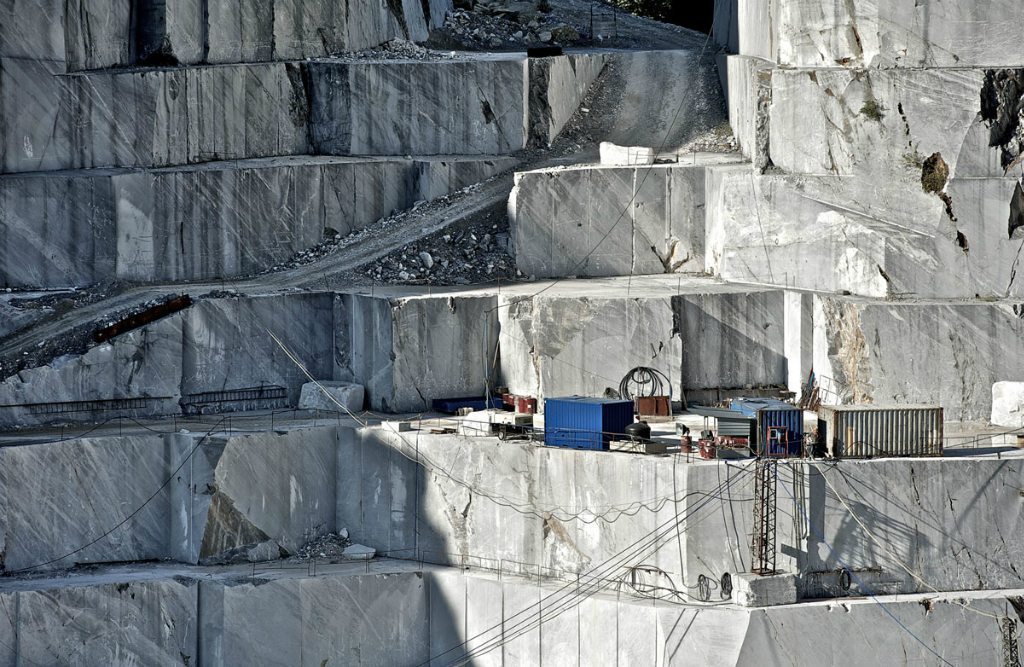Carrara | Marble
Carrara and marble go together like the Cayman Islands and dodgy hedge funds, but virtuously. The Ancient Romans began seriously quarrying here, bewitched by the immaculate white or beautifully-veined rock, and used it to build and decorate their finest public buildings and private houses. During the Renaissance, Michelangelo tramped up here, and more recently Henry Moore, both seeking the perfect block from which to sculpt a timeless masterpiece.
The Polvaccio quarry was first exploited in the 1st century BCE, and its beautiful marble admired and exported around the Mediterranean. Today it’s owned by the Cave Michelangelo group, still excavating to supply the finest stone for statuary and architecture. Cave Michelangelo has its own state-of-the-art workshop, Studi d’Arte Cave Michelangelo, where young talents are trained working side-by-side with past masters on sculptures, architectural and interior design projects, and in restoration. Established artists come here too, to choose and chip away at awe-inspiring hunks of rock.
The white marble tops of the Apuan Alps around Carrara are visible from miles away, but seeing the workings close-up obviously requires organization and certain safety measures. Fascinating tours in off-road vehicles can be arranged through Cave di Marmo Tours, among others.
Any quarry tour will take in Colonnata. Traditionally home of the best quarriers, it’s a tiny village some 7 km above Carrara, probably populated by slaves who worked the quarries in Roman times. It’s now renowned as the home of the best quarriers’ lunch, Lardo di Colonnata, an exquisitely delicious cold cut made from slices of pork back fat layered with salt, pepper, garlic and herbs and cured in a covered marble basin for 6 to 10 months. Ignore any recipes you may come across: to enjoy it at its best, just lay a paper-thin slice on fresh bread still warm from a light toasting. Another marble marvel.




